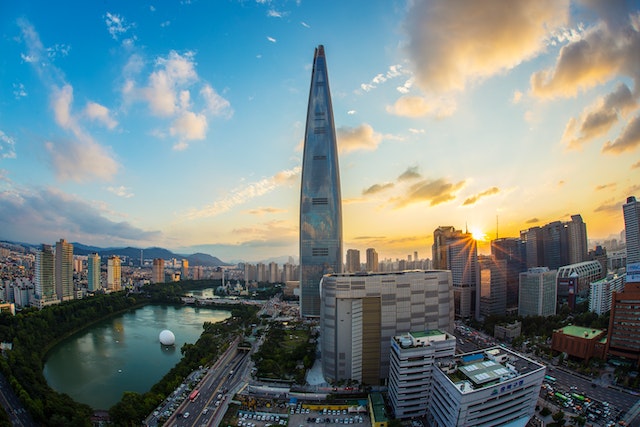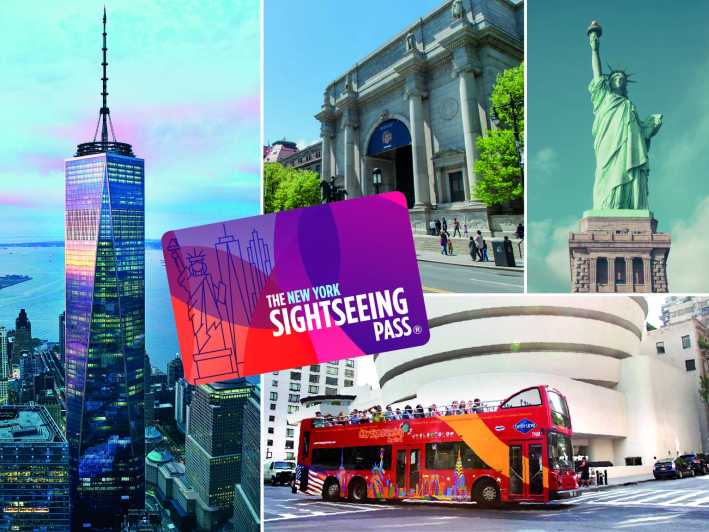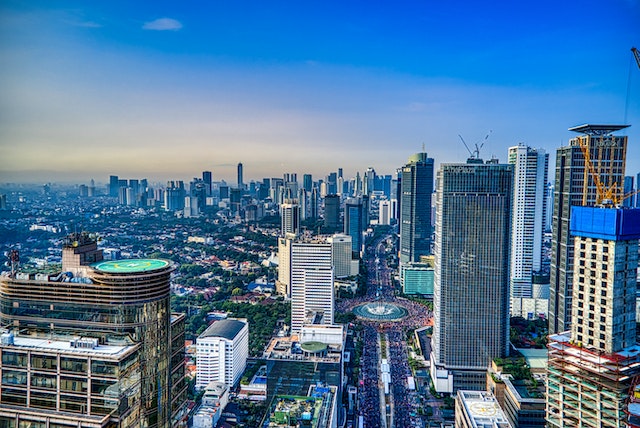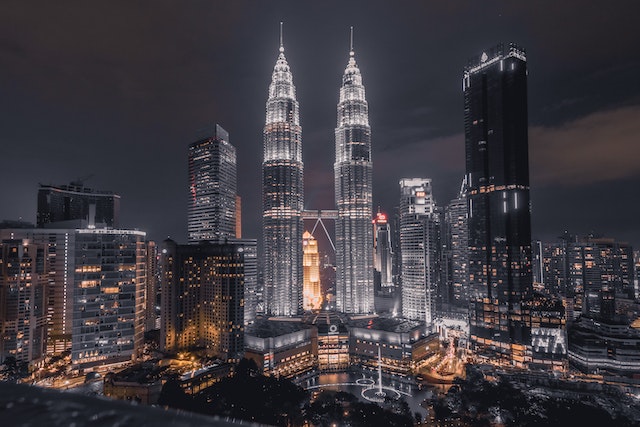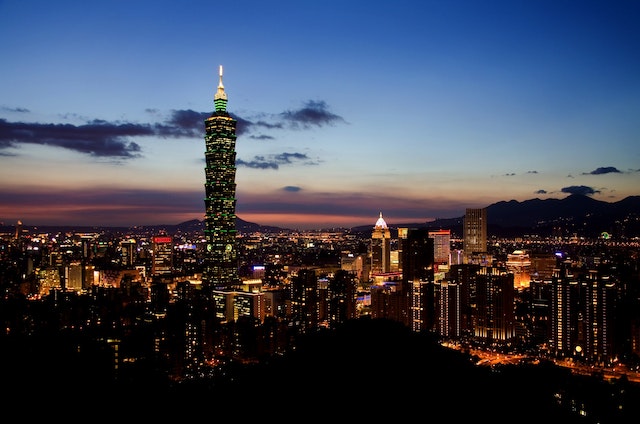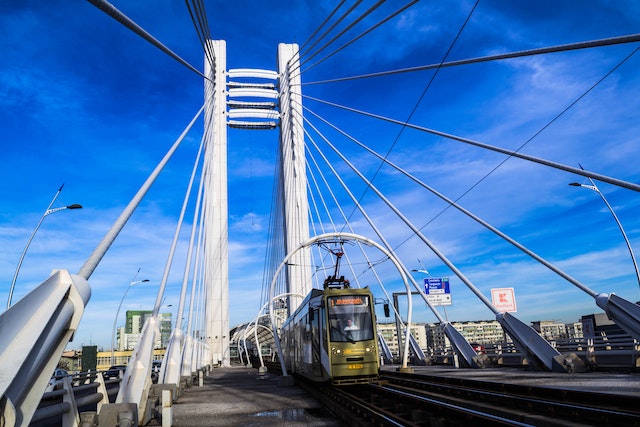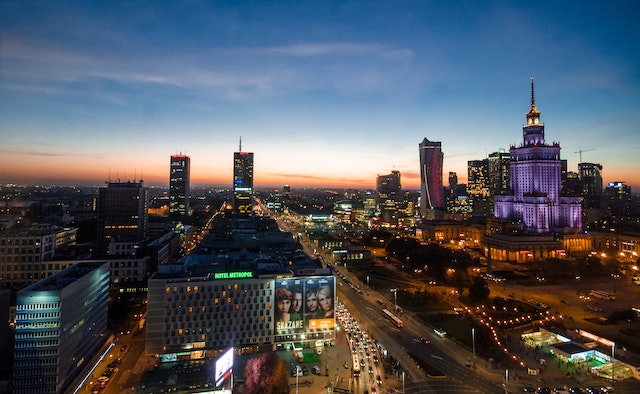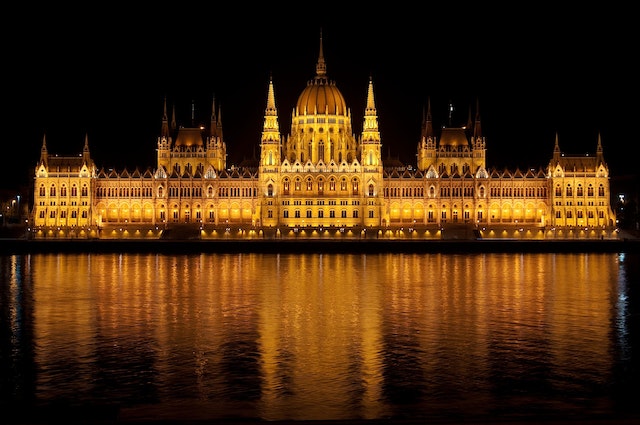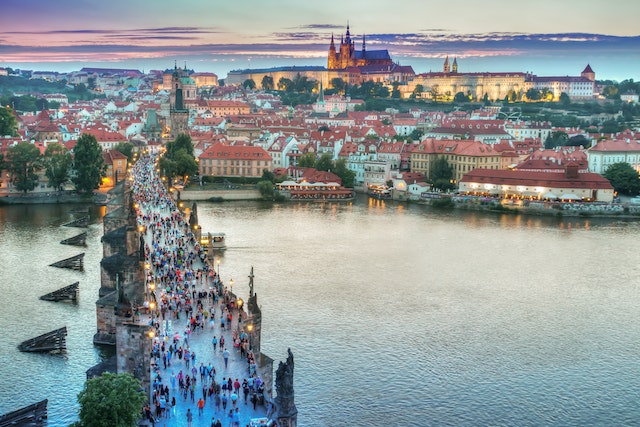Seoul: A Captivating Destination Seoul, the dynamic capital of South Korea, entices travelers with its unique blend of tradition and modernity. This bustling metropolis is a treasure trove of cultural wonders, historical landmarks, and vibrant city life. From majestic palaces to cutting-edge technology, Seoul promises an unforgettable experience that leaves visitors spellbound.
Embracing the Anticipation As the departure date draws near, the excitement and anticipation for the journey from Atlanta to Seoul begin to build. The allure of exploring a new culture, tasting exotic cuisines, and immersing in a world far different from one’s own creates a sense of eagerness and wonder.
Unveiling the Purpose This travel literary piece aims to provide a comprehensive guide to anyone embarking on a journey from Atlanta to Seoul. From selecting the best airline options and travel days to understanding the weather, customs, and must-visit attractions, this article aims to equip travelers with essential knowledge and insights for a rewarding and soul-enriching experience in Seoul. Whether it’s a 5-day escapade or a week-long adventure, this guide will pave the way for a memorable and immersive trip in the heart of South Korea’s captivating capital.
Selecting the Best Airline and Travel Day
A. Direct Flights: Connecting Atlanta to Seoul Numerous airlines offer direct flights bridging the distance between Atlanta and Seoul. These non-stop options provide a seamless and time-efficient travel experience, eliminating the hassle of layovers and connecting flights.
B. Making an Informed Choice: Amenities, Services, and Reviews Before making a decision, it’s essential to compare the offerings of different airlines. Evaluate the amenities, services, and in-flight experiences they provide. Pay attention to customer reviews, as they offer valuable insights into the quality of service, punctuality, and overall customer satisfaction.
C. Optimal Comfort and Reliability: Our Top Airline Recommendation Considering the criteria of comfort, reliability, and positive customer feedback, our top recommendation for the Atlanta to Seoul route is an airline renowned for its exceptional service and commitment to passenger well-being. Travelers can expect a smooth and enjoyable journey, making their trip even more pleasant and memorable.
D. Finding the Perfect Day: Balancing Cost and Convenience Selecting the best day of the week to travel plays a crucial role in optimizing cost and convenience. By choosing a less busy travel day, you can avoid crowds, long lines, and potentially secure better deals on airfares. This thoughtful planning ensures a stress-free and budget-friendly journey to Seoul.
Travel Itinerary
A. Departure from Atlanta, USA The journey begins at Hartsfield-Jackson Atlanta International Airport (ATL), one of the busiest and well-connected airports in the world. Ensure you arrive well in advance, allowing ample time for check-in, security procedures, and boarding.
B. Layover Information (if applicable) Depending on the airline and flight route chosen, there might be a layover at an intermediate airport before reaching Seoul. Layovers can range from a few hours to a longer duration. Use this time to stretch your legs, explore the airport, or enjoy some refreshments at the available facilities.
C. Arrival in Seoul, South Korea Touchdown in the bustling Incheon International Airport (ICN), located approximately 30 miles west of Seoul. As one of the world’s best airports, ICN boasts excellent services, amenities, and efficient immigration and customs procedures.
D. Custom Procedures and Immigration Process After disembarking, follow the signs to immigration. Have your passport, visa (if required), and any necessary travel documents ready for inspection. Immigration officers will process your entry into South Korea, ensuring a smooth and straightforward process for eligible travelers.
Once through immigration, proceed to collect your luggage at the designated baggage claim area. Remember to double-check the customs regulations to declare any items that may require declaration.
After clearing customs, step into the vibrant city of Seoul, where your soulful adventure begins. Whether you have pre-arranged transportation or decide to use public transit, embrace the excitement of exploring this captivating city.
Duration and Ideal Trip Length
A. Planning a 5-7 Day Travel Itinerary When crafting your Seoul adventure, consider a well-balanced trip lasting 5 to 7 days. This duration allows you to delve into the city’s essence without feeling rushed. Each day can be thoughtfully curated to include both popular landmarks and off-the-beaten-path gems.
B. Recommended Number of Days to Explore Seoul’s Highlights To truly soak in the highlights of Seoul, a minimum of 5 days is recommended. This timeframe enables you to explore the iconic palaces, immerse yourself in the vibrant street markets, savor local delicacies, and attend cultural performances. For those seeking a more leisurely pace, extending the trip to 7 days ensures a deeper connection with the city and its people.
C. Flexibility in the Schedule for Unexpected Discoveries While crafting an itinerary is essential for a well-organized trip, leave room for serendipitous discoveries. Seoul has a knack for surprising visitors with hidden gems and unplanned delights. Allow yourself the freedom to explore quaint neighborhoods, try spontaneous activities, and interact with locals. This flexibility enriches your travel experience, leaving you with cherished memories beyond the planned itinerary.
Embark on your Seoul adventure with a well-considered duration and a spirit of openness. Whether it’s 5 or 7 days, this soulful city promises an enchanting and soul-enriching journey like no other.
Exploring Seoul’s Weather and Seasons
A. Overview of South Korea’s Climate and Seasonal Changes South Korea experiences four distinct seasons, each offering a unique and captivating atmosphere. Spring (March to May) brings cherry blossoms in full bloom, while summer (June to August) offers warm and humid weather. Fall (September to November) treats visitors to stunning foliage, and winter (December to February) blankets the city in snow.
B. Weather Expectations During the Travel Dates For travelers journeying to Seoul, it’s essential to check the weather forecast for the specific travel dates. Weather conditions can vary significantly during each season. Spring presents mild temperatures, while summer can be hot and humid, requiring light and breathable clothing. Fall offers pleasant cool weather, and winter demands warm layers to combat the cold.
C. Packing Recommendations for Specific Weather Conditions To make the most of your trip, pack accordingly for the expected weather conditions:
- Spring: Bring light layers, a jacket for cooler evenings, and comfortable walking shoes.
- Summer: Pack lightweight, breathable clothing, sunscreen, a hat, and an umbrella for occasional showers.
- Fall: Prepare for mild temperatures with layers, a light jacket, and cozy scarves for chilly evenings.
- Winter: Bundle up with warm winter clothing, including a heavy coat, gloves, scarves, and sturdy boots.
Remember to include essentials such as travel documents, personal medications, and a universal adapter for your electronic devices. Being well-prepared for Seoul’s weather ensures a comfortable and enjoyable exploration of this captivating city.
Cultural Tips and Customs
A. Basic Etiquette and Customs to Follow in South Korea Embracing South Korea’s culture involves adhering to certain basic etiquette and customs. Bowing is a customary greeting, and it’s polite to use both hands when giving or receiving items. Removing shoes before entering homes, temples, or certain establishments is a sign of respect. When dining, wait for the eldest or most senior person to start eating before you begin. Refrain from blowing your nose in public and avoid loud conversations on public transport.
B. Greetings and Common Korean Phrases Familiarize yourself with basic Korean greetings and phrases to foster meaningful interactions with locals. Annyeonghaseyo” (안녕하세요) is a polite way to say “hello.” “Gamsahamnida” (감사합니다) means “thank you,” and “Joesonghamnida” (죄송합니다) is “I’m sorry.” Using these phrases will be appreciated by the locals and enhance your experience in Seoul.
C. Respect for Local Traditions and Customs Demonstrating respect for local traditions is integral to fostering cultural connections. When visiting temples or historical sites, dress modestly and follow any rules or guidelines set by the venue. Be mindful of designated photography areas and avoid taking pictures where it’s not permitted. If you encounter a cultural performance, show appreciation through applause and attentive engagement.
While South Koreans are generally polite and accommodating, understanding and respecting their customs fosters positive interactions and leaves a lasting impression. Taking the time to learn about and embrace their culture enriches your journey and makes your experience in Seoul all the more rewarding.
Must-Visit Attractions in Seoul
Seoul, a city that seamlessly fuses its rich history with cutting-edge modernity, beckons travelers with a captivating array of attractions. Whether you’re a history enthusiast, an admirer of contemporary architecture, or a seeker of cultural experiences, Seoul has something remarkable to offer.
- Gyeongbokgung Palace: Step into the past at Gyeongbokgung Palace, the grandest of Seoul’s five historic palaces. Marvel at its ornate architecture, tranquil gardens, and the mesmerizing Changing of the Guard ceremony.
- Changdeokgung Palace and Huwon: A UNESCO World Heritage site, Changdeokgung Palace, enchants visitors with its delicate beauty. Don’t miss the Huwon Secret Garden, an oasis of nature within the palace grounds.
B. Modern Marvels
- N Seoul Tower: Ascend to the top of N Seoul Tower for breathtaking panoramic views of the city. As the sun sets, the tower’s dazzling lights transform it into a beacon of romance and wonder.
- Dongdaemun Design Plaza (DDP): A modern architectural wonder, DDP is a creative hub that showcases South Korea’s design prowess. Explore its futuristic contours and indulge in a shopping spree at its trendy fashion market.
C. Traditional Markets
- Namdaemun Market: With a history spanning centuries, Namdaemun Market is a treasure trove of traditional goods and bustling energy. Bargain for souvenirs, sample street food delights, and immerse yourself in the vibrant atmosphere.
- Insadong Street: A haven for arts and crafts enthusiasts, Insadong Street exudes cultural charm with its galleries, antique shops, and traditional teahouses. Uncover unique treasures and experience the essence of Korean aesthetics.
D. Cultural Experiences
- Hanbok Rental and Wearing: Transform into a Korean noble or a graceful maiden by renting and donning a Hanbok, Korea’s traditional attire. Stroll through historic sites in this elegant outfit, creating lasting memories.
- Attend a Traditional Performance: Be enthralled by the grace and rhythm of Korean traditional performances. From mesmerizing dance to soulful music, these cultural showcases offer a glimpse into Korea’s artistic heritage.
Seoul’s must-visit attractions cater to diverse interests, inviting travelers to embark on a soul-enriching journey through the captivating layers of this vibrant city. Whether you’re immersing in history, embracing modernity, or celebrating cultural traditions, Seoul promises an unforgettable adventure that lingers in the heart forever.
Food and Cuisine
A. Introduction to Korean Cuisine and Popular Dishes Korean cuisine is a delectable blend of flavors, colors, and textures that tantalize the taste buds. Known for its use of fresh ingredients and balanced flavors, Korean dishes often feature staples like rice, vegetables, meat, and fermented foods. Some popular dishes include:
- Kimchi: Spicy fermented vegetables, typically made with napa cabbage and Korean radishes.
- Bibimbap: A delightful rice bowl topped with an assortment of vegetables, meat, egg, and gochujang (red pepper paste).
- Bulgogi: Thinly sliced marinated beef, grilled to perfection, offering a sweet and savory taste.
- Japchae: Stir-fried glass noodles with vegetables and sometimes meat, seasoned with sesame oil and soy sauce.
B. Recommended Local Restaurants and Street Food Markets To savor the authentic flavors of Korean cuisine, explore local restaurants and vibrant street food markets. Some highly recommended places to indulge in Seoul’s culinary delights include:
- Gwangjang Market: An iconic food market offering a wide array of street food and traditional dishes.
- Myeongdong: A bustling district renowned for its street food stalls serving up a variety of treats, from hotteok (sweet pancakes) to tteokbokki (spicy rice cakes).
- Insadong: A cultural hub with traditional teahouses and restaurants specializing in classic Korean dishes.
- Noryangjin Fish Market: A seafood lover’s paradise, where you can choose fresh seafood and have it prepared for you.
C. Dietary Considerations and Options for Vegetarians/Vegans For vegetarians and vegans, navigating Korean cuisine may seem challenging, as it often includes meat and seafood. However, Seoul has seen a rise in vegetarian and vegan options, and many restaurants cater to these dietary preferences. Look for restaurants that offer “Bibim” dishes without meat or seafood, and try “Buddhist Temple Food” restaurants that serve vegetarian dishes inspired by temple cuisine. Additionally, some street food vendors offer plant-based options like vegetable pancakes or dumplings.
Don’t hesitate to communicate your dietary restrictions with restaurant staff, and they might be able to suggest suitable alternatives or modify dishes to suit your needs. Embrace the opportunity to explore the diverse culinary landscape of Seoul while still adhering to your dietary choices.
Seoul’s food scene is a culinary adventure waiting to unfold, with a variety of flavors and dining experiences to satisfy every palate. Indulge in the city’s rich gastronomic heritage, whether it’s through traditional dishes, street food delights, or vegan-friendly options. Your taste buds are in for an unforgettable treat!
Hidden Gems and Off-the-Beaten-Path Discoveries
Seoul, beyond its renowned attractions, harbors hidden gems and lesser-known treasures that promise delightful surprises for adventurous travelers.
A. Lesser-Known Neighborhoods to Explore Step off the beaten path and explore these charming neighborhoods that offer a taste of local life and unique experiences:
- Ikseon-dong: A historic district with traditional Korean houses (hanok) that have been transformed into trendy cafes, boutique shops, and art galleries.
- Seochon: A bohemian neighborhood filled with art studios, vintage shops, and quaint eateries, perfect for art enthusiasts and those seeking a laid-back atmosphere.
- Mullae-dong: An emerging artsy neighborhood known for its vibrant street art and creative spaces, showcasing the city’s underground art scene.
B. Quaint Cafes and Hidden Alleys with Unique Charm Seoul’s cafe culture is thriving, with numerous charming spots hidden in narrow alleys and corners. Discover these quaint cafes that exude unique charm and offer a haven of relaxation:
- Buam-dong: A neighborhood filled with picturesque cafes nestled amidst greenery and scenic hills, providing an ideal escape from the bustling city.
- Seongsu-dong: A former industrial area turned hipster hub, boasting cafes housed in repurposed factories and warehouses, giving it an industrial-chic ambiance.
- Samcheong-dong: A neighborhood adorned with traditional hanok cafes and hidden courtyards, perfect for a tranquil coffee break.
C. Nature Escapes within or near Seoul Escape the urban hustle and immerse yourself in nature’s embrace at these serene spots within or near Seoul:
- Seoul Forest: An expansive park offering lush greenery, walking trails, and even deer sightings, providing a peaceful retreat within the city.
- Namsan Park: A beautiful park surrounding N Seoul Tower, boasting picturesque walking paths, gardens, and panoramic views of Seoul’s skyline.
- Bukhansan National Park: A hiker’s paradise, just a short distance from Seoul, with stunning mountain trails and refreshing waterfalls.
Venturing into these hidden gems and off-the-beaten-path discoveries allows you to connect with the essence of Seoul beyond its popular tourist attractions. Embrace the unexpected and delve into the lesser-known corners of this vibrant city, where unique experiences and cherished memories await.
Handling Language Barriers
Navigating language barriers can be a concern when traveling to a foreign country like South Korea. Here are some helpful tips and tools to ease communication during your time in Seoul.
A. Tips for Communicating in English While English is not as widely spoken as in some other countries, you can still find English speakers in tourist areas, hotels, and some restaurants. To enhance your communication:
- Learn Basic Korean Phrases: Simple greetings like “hello” (Annyeonghaseyo) and “thank you” (Gamsahamnida) can go a long way in showing respect and initiating conversation.
- Speak Clearly and Slowly: When communicating in English, speak clearly and avoid using slang or complex sentences.
- Use Body Language: Non-verbal cues like gestures and facial expressions can help convey your message effectively.
- Be Patient and Polite: Understand that language barriers can lead to misunderstandings, so remain patient and polite in your interactions.
B. Useful Translation Apps and Language Resources Technology offers valuable tools to bridge language gaps. Consider using these translation apps and resources:
- Google Translate: A popular and reliable translation app that can translate text, voice, and images, even offline.
- Naver Papago: Developed by South Korea’s leading search engine, Naver, Papago provides accurate translations in various languages, including English.
- Pocket-Sized Phrasebook: Carry a small phrasebook with common Korean phrases to refer to when needed.
- Language Learning Apps: Prior to your trip, try language learning apps like Duolingo or Memrise to grasp basic Korean phrases and expressions.
Additionally, some accommodations and tourist information centers may provide language assistance and guidebooks in English, so be sure to inquire about available resources.
Remember that embracing the language barrier as an opportunity to learn and connect with locals can enrich your travel experience. South Koreans are generally understanding and appreciative of travelers who make an effort to communicate in their language. So, don’t hesitate to step out of your comfort zone and engage with the locals—it often leads to memorable and heartwarming encounters.
Safety and Health Considerations
When traveling to Seoul, ensuring your safety and well-being is of utmost importance. Here are essential tips for health precautions and staying safe during your trip.
A. Information on Health Precautions and Vaccinations Before embarking on your journey, consult your healthcare provider or visit a travel clinic to receive up-to-date information on recommended vaccinations and health precautions for South Korea. Common vaccinations might include Hepatitis A, Hepatitis B, Typhoid, and routine immunizations like measles, mumps, and rubella (MMR).
Additionally, be aware of health advisories issued by your home country’s health department concerning any potential health risks in the region. Follow general health guidelines, such as practicing good hand hygiene and maintaining a balanced diet.
B. Safety Tips for Travelers in Seoul Seoul is generally a safe city for travelers, but it’s always wise to take precautionary measures to ensure a worry-free experience:
- Keep Valuables Secure: Be mindful of your belongings, especially in crowded areas. Use a money belt or a secure crossbody bag to protect your valuables.
- Use Licensed Taxis: When using taxis, opt for licensed ones with meters to avoid potential scams.
- Stay Aware of Your Surroundings: Be cautious and aware of your surroundings, especially in unfamiliar areas, to prevent any mishaps.
- Emergency Numbers: Save the local emergency contact numbers, including the police (112) and medical services (119), on your phone.
Additionally, Seoul is known for its safe and efficient public transportation system. However, it’s best to exercise the same level of caution as you would in any other major city—avoiding poorly lit areas at night and using well-known and well-traveled routes when exploring on foot.
Lastly, purchase travel insurance before your trip to provide coverage in case of any unexpected events or emergencies.
By being proactive about your health and safety, you can focus on immersing yourself in Seoul’s vibrant culture and exploring its numerous attractions with peace of mind. Remember to stay informed, stay vigilant, and embrace the adventure of this beautiful city!
Conclusion
A. Reflection on the Journey from Atlanta to Seoul As we conclude our adventurous journey from Atlanta to Seoul, we find ourselves in awe of the mesmerizing contrasts and captivating charms that this city has to offer. From the historic palaces steeped in grandeur to the modern marvels that dazzle the skyline, Seoul has left an indelible mark on our hearts.
B. Unforgettable Memories and Experiences Throughout our 5-7 days in Seoul, we have been immersed in the warmth of Korean hospitality, savoring delectable cuisine, and exploring hidden gems that revealed the city’s soulful essence. We reminisce about the enchanting performances, the vibrant markets, and the tranquil nature escapes that provided solace amidst the bustling cityscape.
C. Final Thoughts and Encouragement for Others to Explore Seoul Seoul is a city that effortlessly blends tradition with innovation, inviting travelers to embark on a soul-enriching journey like no other. As we bid farewell to this enchanting destination, we encourage others to embark on their own Seoul adventure.
Whether you’re drawn to its rich history, its pulsating modernity, or its cultural delights, Seoul promises a tapestry of experiences that resonate long after you return home. Embrace the language, the customs, and the hidden gems; they will lead you to moments of discovery and cherished memories.
Seoul’s allure lies not just in its famed attractions but also in the soul of its people, who graciously welcome visitors from all corners of the world. So, pack your bags, plan your itinerary, and embark on an unforgettable journey to Seoul—the city that promises to captivate your soul and leave you yearning for more.
Bon voyage, fellow travelers, and may your adventures in Seoul be filled with wonder, joy, and unforgettable encounters!

